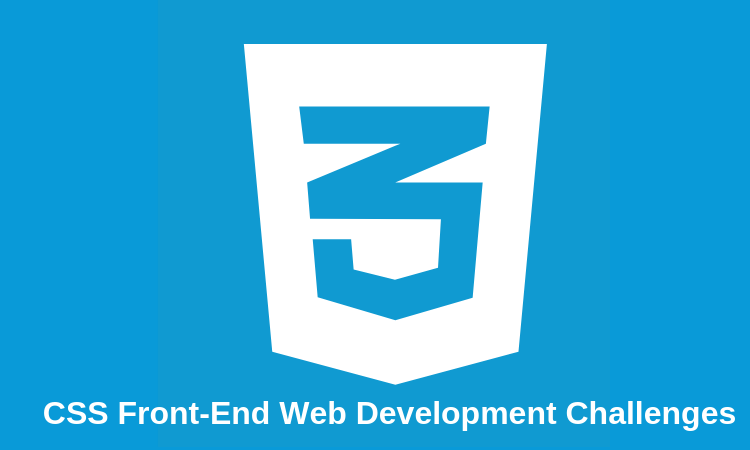
5 Top CSS Front-End Web Development Challenges
WordPress is one of the most convenient web development tools for beginners as well as professionals. Many people hire WordPress developers to acquire a new interface as they can manage it easily afterward without needing much professional help. Developers, on the other hand, like the platform because it allows them the flexibility to use innovative techniques. In this article, we are discussing CSS front-end web development challenges faced by professionals. Cascading Style Sheets (CSS) helps separate the structure of a document from its styling. It allows users to perform their task in a more efficient manner rather than using HTML for all purposes. Professionals though need to be aware of the changes in the field for using the language in a productive manner. There are various aspects of CSS and let’s take a look at some challenging ones.
1. Floated Elements Improper Synchronization With Other Components
Table of Contents
The float property of CSS lets professionals introduce table style columns in an HTML layout without actually using tables. It adjusts a block-level element to either side removing it from the flow in context to other block elements. The naturally-flowing content then easily wraps around the floated element. A problem occurs when floated elements do not position themselves in the normal rendering flow. A browser downloads the Document Object Model (DOM) structure when loading a web page. It searches for the blocks corresponding with the CSS properties present in the CSS files before rendering the page. The flow is the order in which operations are conducted by a browser to render the page. HTML elements use a linear flow by default and are placed from left to right on a page. When space is exhausted, they wrap to the next line. Floated elements do not follow this flow. This happens because the floated elements do not read DOm elements except text elements. Floated elements remain on top of other elements and may not properly synchronize with other components like a block or inline-block elements when they are placed next to them. This issue can be resolved by adding a pseudo-class so that float and non-float elements recognize each other.
2. Fixed Position Elements Not Rendering Perfectly
CSS uses the position property to define the positioning method for an element. There are five kinds of methods namely- static, relative, absolute, fixed, and sticky. The relative and static positioned elements stay in the rendering flow but absolute and fixed elements do not do so. This makes it essential for developers to know how to use them. They must be fully aware of the effect of defining a certain positioning for an element. One of the most common errors is to try to stretch the position to the full width of a layout. When a user scrolls down an absolute or fixed element simply does not follow the flow. This happens because the dimensions and the position were calculated according to the document and not the screen size. Developers must know that absolute and fixed elements will escape the rendering flow and use them accordingly.
3. Flexbox Layout’s Compatibility With Browsers
Another one of CSS Front-End web development challenges is related to the beneficial feature of flexbox. The flexbox (flexible boxes) layout provides a different method for arranging elements. It is a more efficient way as compared to using float and position properties for defining the relationship between elements. Float and position properties place elements in the context of the web page. On the other hand, flexbox allows the placement of elements according to each other. With elements relative only to each other, professionals enjoy increased flexibility while designing a project. They can move components or exchange their positions by only modifying the ordering in the CSS. They can lay the page content in any direction- horizontally as well as vertically. Readers will be wondering with so many conveniences, how can this feature pose a challenge. The issue lies not in the flexbox but in its compatibility with browsers. The feature may not work properly with some older browsers. Professionals must get a complete understanding of project requirements before deciding the technique to design a layout. It will be sensible not to use flexbox if the website needs to support older browsers.
4. Skilled Use Of Adaptive Design
The growing usage of mobile devices has increased the demand for responsive web design. The technique ensures that a web page is rendered perfectly on all screen sizes. It is a cost-effective method with only a single design needed to be created for all screen dimensions. The layout responds to the screen and shrinks or expands accordingly. Adaptive design, on the other hand, involves the creation of separate layouts for different devices. For instance, two layouts will be created for mobile and desktops. When a visitor requests the website, it detects the device before presenting a suitable layout. Most interfaces use a mixture of both the techniques to provide visitors with good user experience. Media properties are used for creating an adaptive design in CSS. These properties help in finalizing the criteria which determine which version of a website will be displayed. Many professionals are still not skilled enough in using adaptive web design techniques. This happens because responsive design is easier to do and also less time-consuming. Most smaller firms pick responsive design projects to generate more revenue quickly. This robs most developers of valuable experience of executing adaptive design assignments.
5. Lack Of Experience In Using Responsive CSS Frameworks
Another development in recent times that is beneficial is the advent of responsive CSS frameworks. These provide a 12-column grid system which is used for positioning the elements. Complete frameworks like Bootstrap, Materialize, and Foundation go beyond offering just a grid system. They provide additional functionalities like JavaScript plugins beside CSS rules and design elements. A mixture of CSS functionality and design elements helps professionals in efficiently and quickly executing projects. Developers looking to excel in CSS must gain experience in working with frameworks. Currently, there are few professionals who possess high levels of experience is using these tools.
Conclusion
Professionals who overcome these front-end web development challenges will become experts in the field. They will be sought after by clients for executing complex and demanding web development projects.
Author Bio
Jacob Graves is a Sr. WordPress Developer at HireWPGeeks Ltd, a company that provides wordpress website development services in a convenient manner. He is a passionate writer and loves to share WordPress and SEO related tutorials.
Trending











